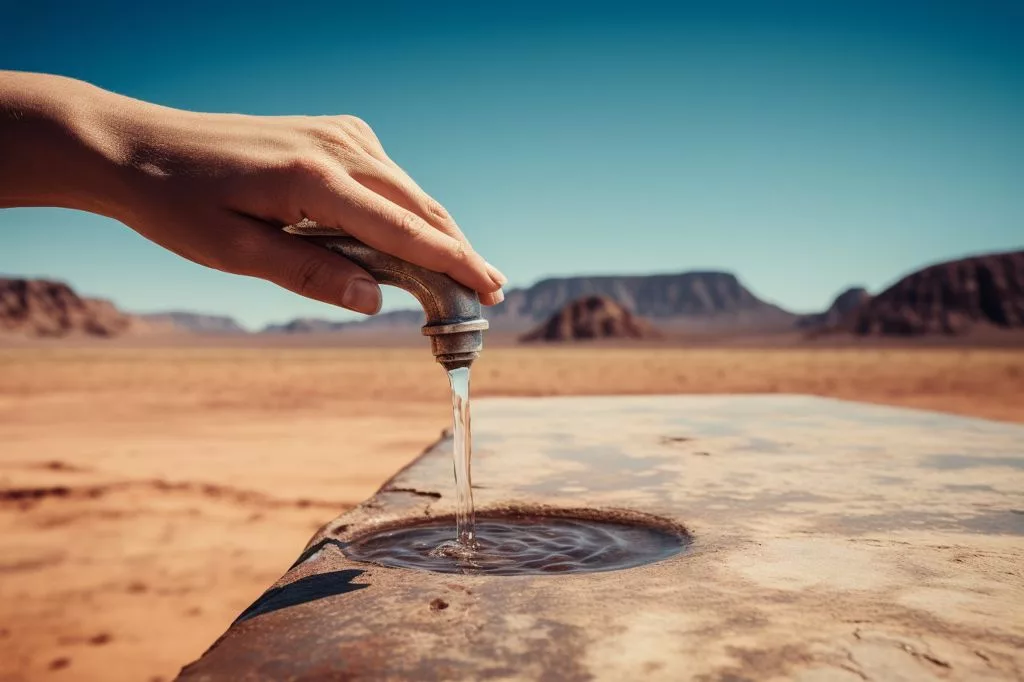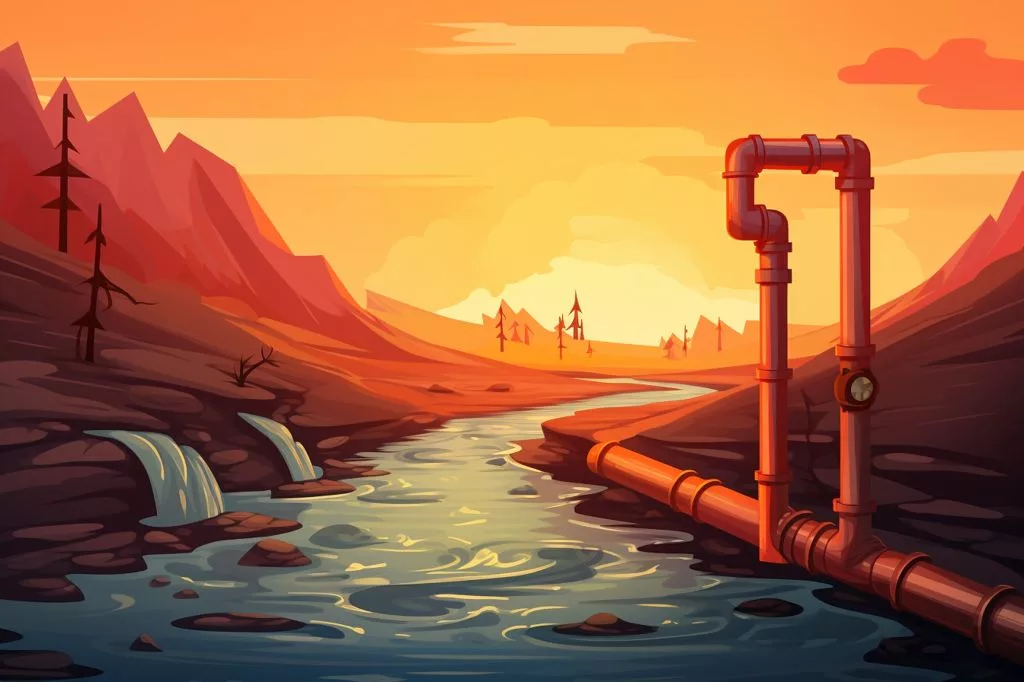Mpumalanga’s water levels have remained stable, but ongoing water conservation initiatives are crucial. The latest weekly reservoir report showed a slight drop in average water levels in dams, emphasizing the significance of heeding the Department of Water and Sanitation’s call for water conservation. Dams in distinct districts have recorded lower water levels, highlighting the need for individuals, businesses, and governments worldwide to adopt water conservation strategies and invest in responsible and efficient use of this invaluable resource for a sustainable future.
What is the water situation in Mpumalanga?
Mpumalanga’s water levels have remained stable, but it’s crucial to remain mindful of water usage. The latest weekly reservoir report showed a slight drop in average water levels in dams, highlighting the importance of ongoing water conservation and monitoring initiatives. Dams in distinct districts have recorded lower water levels, emphasizing the significance of heeding the Department of Water and Sanitation’s call for water conservation. It is essential for individuals, businesses, and governments worldwide to adopt water conservation strategies and invest in responsible and efficient use of this invaluable resource.
Steady Water Levels Call for Continuous Conservation
Water is a crucial resource, serving as the foundation of life on our planet. Particularly in Mpumalanga, a province in South Africa, the Department of Water and Sanitation has encouraged residents to remain mindful of their water usage, even as overall levels remain stable. This situation highlights the importance of ongoing water conservation and monitoring initiatives.
On October 9, 2023, a weekly reservoir report revealed that the average water levels in Mpumalanga’s dams have experienced a slight drop from 93.4% to 92.8%. This decline might seem insignificant, but it serves as a reminder for residents to be cautious about their water consumption habits. Furthermore, the current year’s water levels are still higher than the 90.3% recorded during the same period the previous year.
The same report showed that water management areas (WMAs) in the province have also seen their water levels decrease. The Olifants WMA’s levels have fallen from 86.4% to 85.8%, while the levels in the Inkomati-Usuthu WMA have gone from 94.1% to 93.6%. Additionally, water levels in Mpumalanga’s districts have diminished, with Ehlanzeni, Gert Sibande, and Nkangala experiencing declines.
Dams in Distinct Districts Display Decreases
In the Lowveld and Ehlanzeni District, most dams have recorded lower water levels, except for Primkop and Da Gama dams, which remain unchanged at 100.4% and 94.1%, respectively. Dams that have seen reductions in water levels include Blyderivierpoort, Buffelskloof, Driekoppies, Longmere, Klipkopjes, Witklip, Kwena, Inyaka, and Ohrigstad.
The Gert Sibande District reports decreasing water volumes as well, with Westoe being the sole listed dam to maintain its water level at 58.0%. Grootdraai, Nooitgedacht, Vygeboom, Jericho, Morgenstond, and Heyshope dams have all recorded reductions in water levels.
In the Nkangala District, most of the listed dams have experienced declines in their water levels, except for Middelburg Dam, which recorded a minor increase from 92.5% to 92.7%. Witbank Dam, Loskop Dam, and Rhenosterkop/Mkhombo Dam have all reported decreases in their water levels.
Conservation is Crucial for a Sustainable Future
Mpumalanga’s fluctuating water levels emphasize the importance of heeding the Department of Water and Sanitation’s call for water conservation. The stability of the region’s water supply is vital not only for the well-being of its residents but also for businesses and organizations relying on water for their operations.
The ongoing struggle to ensure stable and sustainable water supplies is a global issue. Factors such as climate change, population growth, and industrialization continuously threaten this delicate balance. Consequently, it is essential for governments, businesses, and individuals worldwide to adopt water conservation strategies and invest in technologies and infrastructure that enable responsible and efficient use of this invaluable resource.
Mpumalanga’s water situation serves as a powerful example of the significance of water conservation and the need for continuous monitoring and evaluation. By being vigilant in our water consumption habits and adopting sustainable water management practices, we can contribute to protecting our planet’s most vital resource and securing a better future for generations to come.
Let us take Mpumalanga’s experience as a lesson and strive to conserve water in our daily lives. The well-being of our environment, our communities, and our planet depends on the choices we make and the actions we take today.
1. What is the water situation in Mpumalanga?
Mpumalanga’s water levels have remained stable, but it’s crucial to remain mindful of water usage. The latest weekly reservoir report showed a slight drop in average water levels in dams, highlighting the importance of ongoing water conservation and monitoring initiatives.
2. Why is ongoing water conservation important in Mpumalanga?
Ongoing water conservation is important in Mpumalanga to ensure the stability of the region’s water supply for the well-being of its residents and businesses relying on water for their operations.
3. What does the weekly reservoir report reveal about Mpumalanga’s water levels?
The weekly reservoir report revealed that the average water levels in Mpumalanga’s dams have experienced a slight drop from 93.4% to 92.8%.
4. How significant is the drop in average water levels in Mpumalanga’s dams?
The decline might seem insignificant but it serves as a reminder for residents to be cautious about their water consumption habits. Furthermore, the current year’s water levels are still higher than the 90.3% recorded during the same period the previous year.
5. Which water management areas (WMAs) in Mpumalanga have seen their water levels decrease?
The Olifants WMA’s levels have fallen from 86.4% to 85.8%, while the levels in the Inkomati-Usuthu WMA have gone from 94.1% to 93.6%.
6. Which districts in Mpumalanga have experienced declines in water levels?
Ehlanzeni, Gert Sibande, and Nkangala districts have experienced declines in water levels.
7. Which dams in Mpumalanga have recorded lower water levels?
Most dams in the Lowveld and Ehlanzeni District, Blyderivierpoort, Buffelskloof, Driekoppies, Longmere, Klipkopjes, Witklip, Kwena, Inyaka, and Ohrigstad have seen reductions in their water levels. In the Gert Sibande District, Grootdraai, Nooitgedacht, Vygeboom, Jericho, Morgenstond, and Heyshope dams have all recorded reductions in water levels. In the Nkangala District, Witbank Dam, Loskop Dam, and Rhenosterkop/Mkhombo Dam have all reported decreases in their water levels.
8. Why is water conservation crucial for a sustainable future?
Water conservation is crucial for a sustainable future as factors such as climate change, population growth, and industrialization continuously threaten the delicate balance of water supply. It is essential for governments, businesses, and individuals worldwide to adopt water conservation strategies and invest in technologies and infrastructure that enable responsible and efficient use of this invaluable resource.








